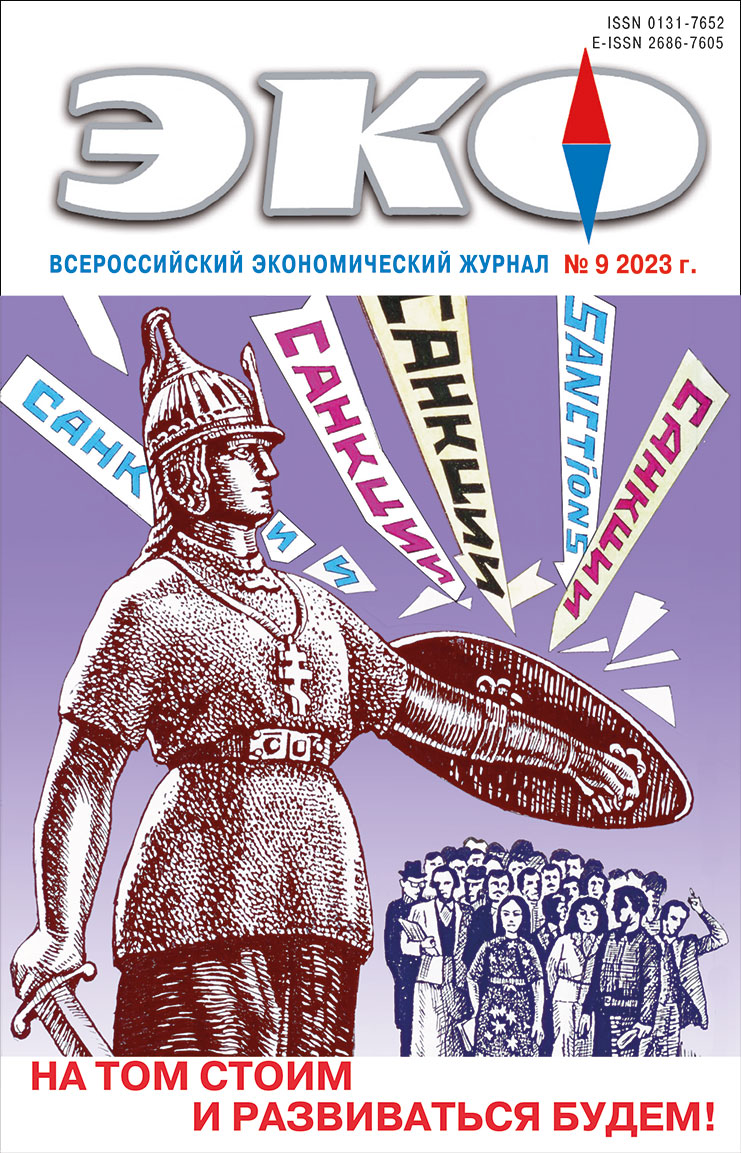Cover story: We are Here to Stay and We will Carry on Developingy!
Published 2023-08-30
Keywords
- sanctions; elite consolidation; state support; development institutions; industrial policy; automobile industry; Iran; Russia
How to Cite
1.
Chikin А. Sanctions and Development of the Automotive Industry in Iran. ECO [Internet]. 2023 Aug. 30 [cited 2025 Dec. 21];53(9):73-88. Available from: https://ecotrends.ru/index.php/eco/article/view/4652
Abstract
Increasing international sanctions against Russia have become an unprecedented challenge to the viability of both individual enterprises and entire industries and sectors of the economy. The decisive factor in overcoming difficulties is the degree of coordination of producers’ efforts and targeted support measures from the state. A number of countries already have experience of successful autonomization in certain industries under sanctions. In the article on the example of Iran’s auto-mobile industry the mechanisms and factors that could play a key role in the development of this industry in the conditions of severe international restrictions are considered. Such an analysis helps to identify the risks and opportunities that the approach chosen by Russia on the path of import substitution in the automotive industry.References
- Amsden, A. (1989). Asia’s next giant. New York. Oxford University Press.
- Amsden, A. (2001). The Rise of “the Rest”: Challenges to the West from Late-Industrializing Economies. Oxford; New York. Oxford University Press.
- Baktiari, B. (1996). Parliamentary politics in revolutionary Iran: the institutionalization of factional politics. Florida. University Press of Florida.
- Brzezinski, Z., Scowcroft, B., Murphy, R. (1997). Differentiated containment. Foreign Affairs. No. 76(3). Pp. 20–30.
- Doner, R.F., Noble, G.W., Ravenhill, J. (2021). “The political economy of automotive industrialization in East Asia”. Oxford university Press.
- Doner, R.F., Schneider, B.R. (2016). The Middle-Income Trap: More Politics than Economics. World Politics. Vol. 68. No. 4. Pp. 608–644.
- Evans, P.B. (1995). Embedded autonomy: states and industrial transformation. Princeton. Princeton University Press.
- Geddes, B. (1990). Building “state” autonomy in Brazil, 1930–1964. Comparative Politics. No. 22(2). Pp. 217–35.
- Johnson, C. (1982). MITI and the Japanese miracle: the growth of industrial policy, 1925–1975. Stanford. Stanford University Press.
- McKinsey & company (2021). “Coping with the auto-semiconductor shortage: Strategies for success”. <https://www.mckinsey.com/industries/automotive-and-assembly/our-insights/coping-with-the-auto-semiconductor-shortage-strategies-for-success>
- Mehri, D.B. (2015). Pockets of Efficiency and the Rise of Iran Auto: Implications for Theories of the Developmental State. Studies in Comparative International Development 50. Pp. 408–432.
- Mehri, D.B. (2017). Iran Auto: Building a Global Industry in an Islamic State. Cambridge University Press.
- Whittaker, H.D., Zhu, T., Sturgeon, T., Tsai, M.H., & Okita, T. (2010). Compressed Development. Studies in Comparative International Development. No. 45. Pp. 439–467.
- Womack, J., Jones, D., Roos, D. (2007). The machine that changed the world. New York. Free Press.

